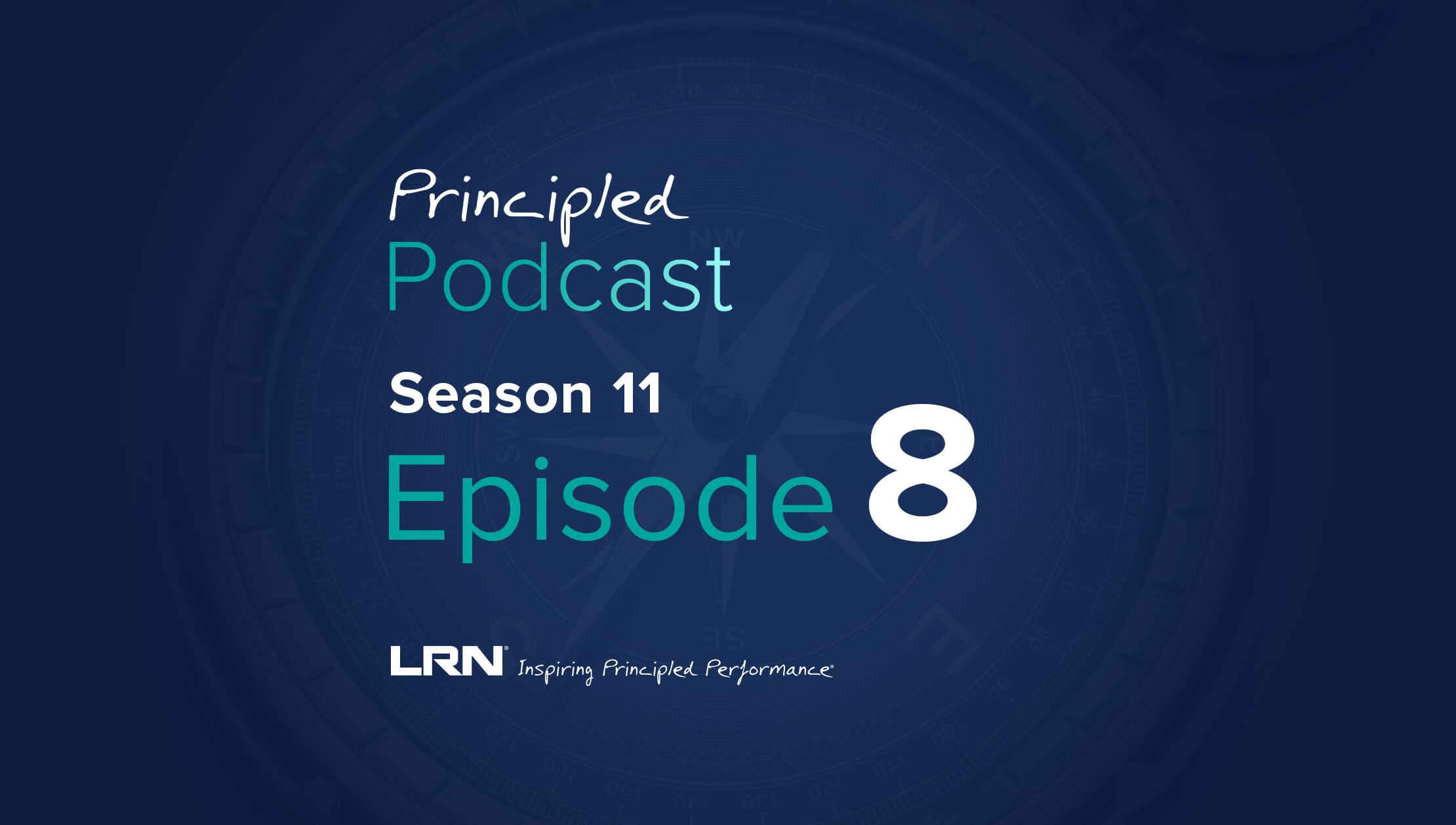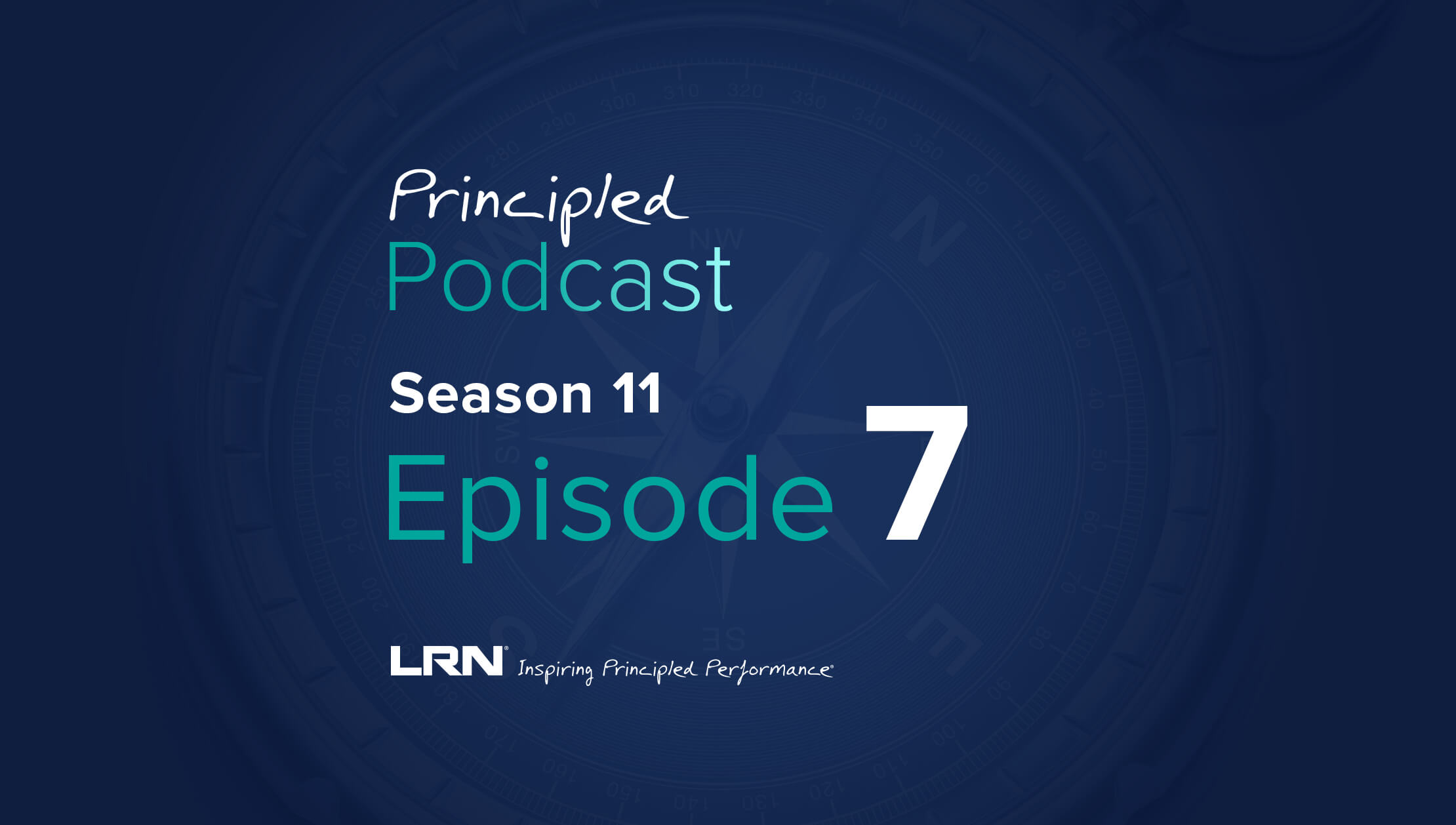The Ethics & Compliance Initiative (ECI) recently hosted a forum on ethics and compliance program effectiveness, including the panel “Embedding E&C in the Business through Ethics Liaisons.” The panel was hosted by our Chief Advisory Officer Ty Francis, MBE and featured a panel of accomplished guests in the ethics and compliance space including:
- Loren Becher, director of enterprise programs and chief of staff at Alexion Pharmaceuticals Inc.
- Janet Dellea, ethics and business conduct lead at Raytheon Missile & Defense
- Yan Tougas, global ethics and compliance officer at Raytheon Technologies Corporation
The group talked about ethics liaison programs—an extension of their wider ethics and compliance teams—and shared best practices for creating, training, and measuring programs based on their own experiences.
How are ethics liaisons different from an ethics and compliance program?
Ethics and compliance can benefit from identifying and leveraging key influencers in the business. An ethics liaison is often an employee outside of the direct E&C team who volunteers to be an advocate for the company’s ethical values and compliance with laws and regulations. Companies usually have a team of ethics liaisons from various departments.
Ethics liaisons have a wide variety of responsibilities, from serving as a subject matter resource for other employees and leaders to facilitating ethics training and other activities traditionally performed by E&C program staff. In some cases, ethics liaisons also act as a communication conduit between company leadership and the E&C function.
Why create an ethics liaison program?
Ethics liaisons help to bolsterE&C programs, increasing the program’s overall efficacy and impact within organizations. According to our 2021 Ethics & Compliance Program Effectiveness Report, 82% of professionals indicated that their organizations emphasized company values—not just rules and procedures—to motivate employees to do the right thing in difficult circumstances.
Having an ethics liaison program enriches the work of a company, the E&C function, and the employees who volunteer. Panelists from the ECI forum outlined three ways this kind of program benefits their global organization:
- For their business: Implementing ethics liaisons at each office helps mitigate wider organizational risk. This local, immediate resource can act as an early detection system of what is working and what needs attention.
- For their E&C team: The program cultivates a wider and more approachable presence of the E&C function.
- For their liaisons: The program presents an opportunity to enhance their careers through networking and developing new skillsets.
6 best practices for ethics liaison program effectiveness
Here are six key tips from the panelists for building effective ethics liaison programs, each related to identifying participants, training them for their roles, and measuring outcomes:
- Start small. Of the 75 attendees at the panel, 35% noted that their organization doesn’t have an existing ethics liaison program—but they’re either planning or interested in establishing one. For folks in the early planning stages, Becher recommended starting out with a framework that identifies a few high performers at your company and has them go through one training per quarter, each covering a different E&C topic.
- Develop specific selection criteria. It’s important that your ethics liaisons are dedicated to making your program a success. To ensure you select the right candidates, create a specific set of criteria that details the exact hard and soft skills you’re looking for in a liaison. Dellea and Tougas mentioned that it is worth considering:
- How many hours per week you will expect from your ethics liaison—especially if your program is on a volunteer basis.
- How long you expect liaisons to be in the role. Dellea and Tougas recommended a two-year minimum commitment, as the first year will likely consist of liaisons going through training.
- How you will source and vet nominations. Dellea and Tougas noted that leadership, HR, finance, security, and other E&C adjacent teams are great places to seek liaison nominations.
- Get leadership buy-in as soon as possible. Dellea and Tougas noted that an ethics liaison program can’t begin until there’s leadership buy-in. Yet 24% of panel attendees cited that their top program challenge is getting leadership support. To help with this, Dellea and Tougas shared some tips based on what they included in their own program presentation to leadership:
- Clearly outline the what the program will do and what it will aim to accomplish.
- State why the program is important—e.g., amplifying company values and reducing organizational risk.
- Define what success looks like.
- Note what leadership gets out of the program—e.g., additional compliance resources and a positive message to employees that they care about E&C.
- Include a communications strategy for program updates and milestones.
- Incorporate hands-on learning. It‘s important to have company-wide ethics and compliance training that engages people; similarly your ethics liaison training should be energizing. To give her liaisons a chance to build their capabilities, Becher’s program implements a mixed learning experience using the 70 / 20 / 10 model.
- 70% on-the-job learning
- 20% coaching and mentoring
- 10% formal training
This gives liaisons ample opportunity to interact and apply their new skillsets with others in various situations.
- Provide resources. The learning experience should include sharing resources for ethics liaisons to refer back to while they’re on the job. Dellea and Tougas created a reference guide that gives a snapshot of which trainings to take and policies to read, as well as a handbook with more comprehensive information. They also created a shared website including liaison profiles, monthly meeting agendas, and surveys to test training knowledge.
- Leave no datapoint behind. The top challenge among panel attendees (44%) was measuring program effectiveness. Becher encouraged analyzing data from all angles, such as:
-
- Surveying ethics liaisons themselves about their program satisfaction.
- Recording the number of trainings delivered/facilitated by liaisons—and how many employees attended.
- Monitoring the number of requests liaisons receive from employees outside trainings.
Additional resources for ethics liaison programs
In addition to these best practices, the panelists shared reports with further information on creating ethics liaison programs and measuring program effectiveness.



